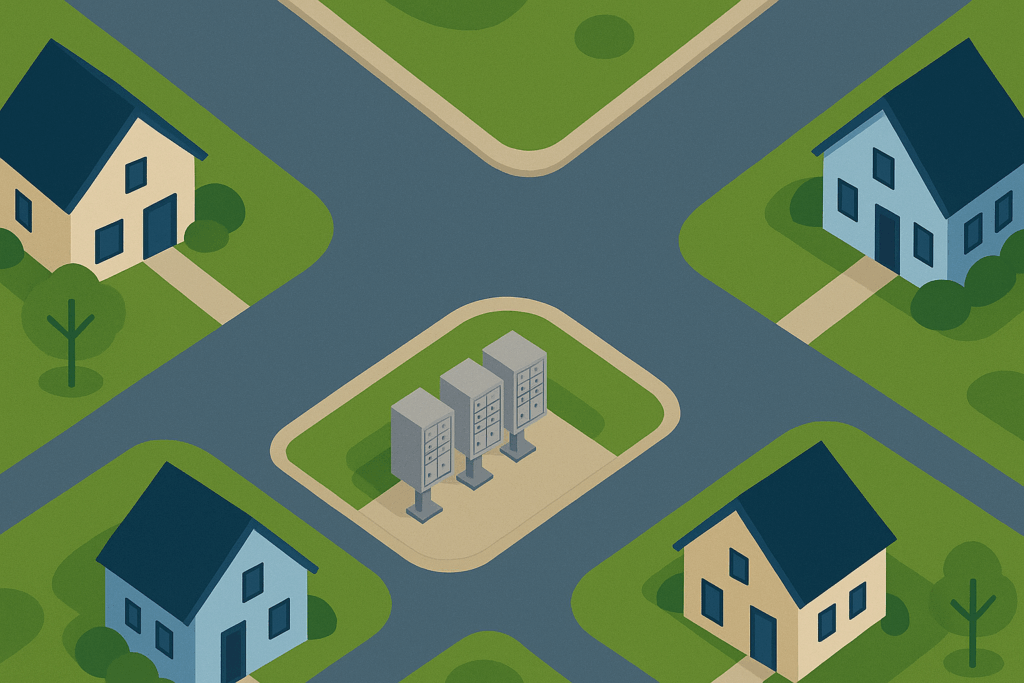Proper mail service planning is a critical yet often overlooked component in the design and construction of residential housing developments. Efficient and secure mail delivery not only ensures resident satisfaction but also complies with regulations and postal service standards. Here’s how developers can plan effective mail service infrastructure in residential projects.
Understanding postal service requirements
USPS guidelines
In the United States, the United States Postal Service (USPS) has specific regulations for mail delivery in new housing developments. Developers must coordinate with USPS early in the planning stages to determine delivery methods, mailbox placement, and community mailbox options.
Key considerations include:
- Use of centralized mail delivery units (CBUs)
- Accessibility standards per ADA guidelines
- Weather protection and lighting requirements
Local regulations
Local municipalities may have additional requirements beyond federal standards. These can include design aesthetics, landscaping around mailboxes, and proximity to pedestrian walkways. Engaging with city planning offices ensures that the mail service design aligns with local expectations.
Types of mail delivery options
Centralized mail delivery
Centralized delivery through CBUs or kiosk units is the most common system in new developments due to cost efficiency and security. These units are placed in central locations and are designed to serve multiple homes.
Advantages:
- Lower delivery costs for USPS
- Secure compartments with parcel lockers
- Reduced visual clutter in neighborhoods
Door-to-door delivery
Although rare in new developments, some areas still support door-to-door delivery. This method is generally more expensive and may be phased out by USPS in new projects.
Limitations:
- Higher operational costs
- Requires more space and route planning
Site planning and mailbox placement
Location and accessibility
Mailbox placement should be convenient for residents and easily accessible by mail carriers. Ideal locations are near community entrances, adjacent to sidewalks, and in well-lit areas. For larger communities, multiple units may be necessary to serve different blocks.
Safety and security
Security is a top concern, especially in high-density developments. Mailboxes should be placed in visible, well-trafficked areas with good lighting and surveillance options. Consideration for vandal-resistant and tamper-proof designs is also important.
Integrating mail service with community design
Aesthetic considerations
Mailboxes can be integrated into the community’s overall aesthetic. Custom mailbox enclosures, landscaping, and coordinated signage can enhance curb appeal while maintaining functionality.
Accessibility for all residents
Designs must comply with the Americans with Disabilities Act (ADA), ensuring that individuals with mobility challenges can easily access mail services. This includes proper height, pathway clearance, and reachable compartments.
Collaboration with stakeholders
Working with the postal service
Early engagement with the USPS is critical. Developers should submit site plans for review and obtain written confirmation on approved mailbox types and locations.
Involving homeowner associations
For developments with HOAs, decisions on mailbox design, placement, and maintenance often require HOA input and approval. Collaboration ensures that mail service aligns with community expectations.
Conclusion
Planning mail service in residential housing developments requires a balance between compliance, convenience, and community design. By considering USPS standards, local regulations, and resident needs from the outset, developers can create a mail delivery system that enhances security, efficiency, and the overall living experience.
Please note that the USPS updates standards and information periodically. Always check with your local Postmaster before proceeding with mail center projects.
Have questions? We’re here to help.
The Mailbox Directs team is always available to assist with your mailbox project. Let us help you build a cluster mailbox solution for your neighborhood or building complex.

